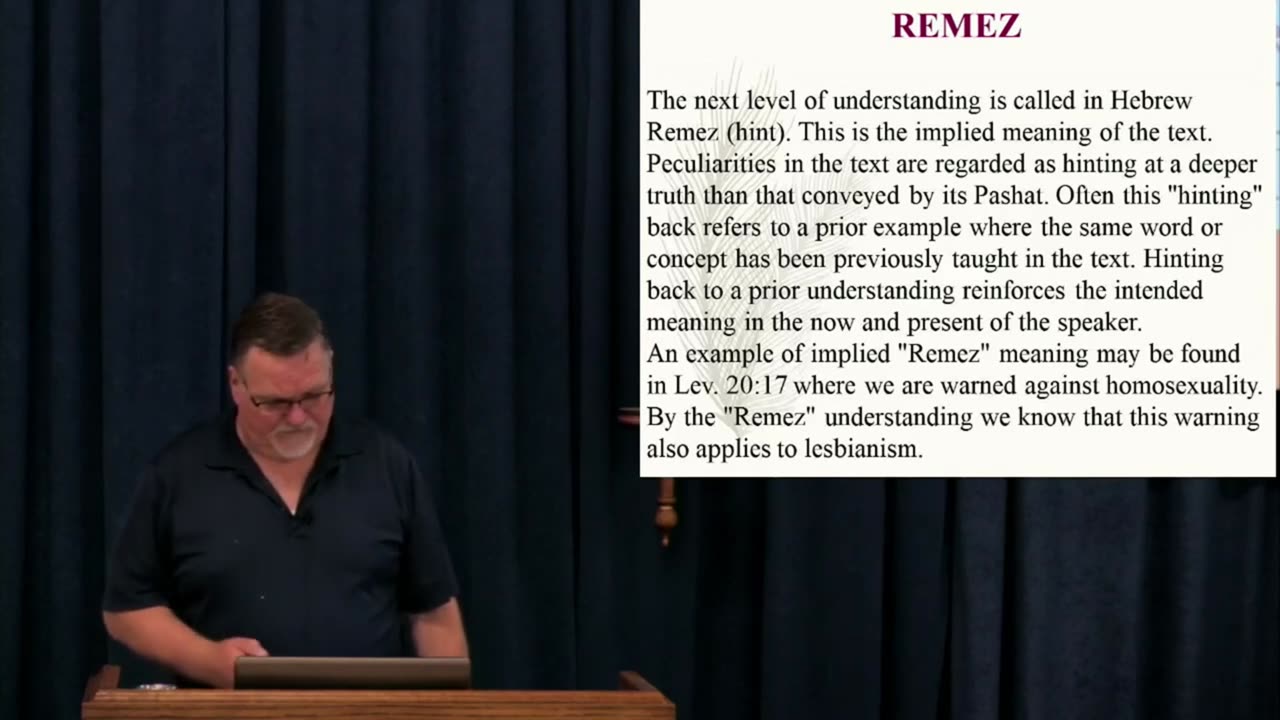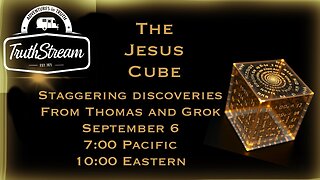Premium Only Content

Understanding Scripture; knowing these levels will help you - Pashat - Ramez - Drash - SOD 2023
Method of Understanding Scripture 2023
The following rules of thumb that can determine if a passage is figurative.
Pashat: First level of understanding. Literal meaning. the plain, simple meaning of the text; understanding scripture in its natural, normal sense using the customary meanings of the words being used, what it says.
Remez: The next level of understanding is called in Hebrew REMEZ (hint). This is the implied meaning of the text. Peculiarities in the text are regarded as hinting at a deeper truth than that conveyed by its PASHAT.
Drash: Another level of understanding the Scriptures is called in Hebrew “drash” meaning “search”, this is the allegorical, typological or homiletical application of the text. Creativity is used to search the text in relation to the rest of the Scriptures, other literature, or life itself in order to develop an allegorical, typological or homiletical application of the text. This process involves exegesis (critical explanation or interpretation of a text, especially of scripture:), eisegesis (is when a reader imposes their interpretation of the text.) of the text.
Three important rules of thumb in utilizing the drash level of understanding a scripture are:
[1] A drash understanding cannot be used to strip a passage of its PASHAT meaning, nor may any such understanding contradict any PASHAT meaning of any other scripture passage. As the Talmud states “No passage loses its PASHAT.” (b. Shab. 63a; b.Yeb. 24a)
[2] Let scripture interpret scripture. Look for the scriptures themselves to define the components of an allegory. For example, use Mt. 12:18–23 to understand Mt. 13:3–9; Rev. 1:20 to understand Rev. 1:12–16; Rev. 17:7–18 to understand Rev. 17:2–8 etc.…
[3] The primary components of an allegory represent specific realities. We should limit ourselves to these primary components when understanding the text. Allegorical - involves exegesis (critical explanation or interpretation of a text, especially of scripture:) and eisegesis (is when a reader imposes their interpretation of the text.)
SOD: (Rarely use by RVTA) The final level of understanding the Scriptures is called in Hebrew “SOD” meaning “hidden”. This understanding is the hidden, secret or mystic meaning of a text. (See I Cor. 2:7–16 esp. 2:7). This process often involves returning the letters of a word to their prime-material state and giving them new form in order to reveal a hidden meaning. An example may be found in Rev. 13:18 where the identity of the Beast is expressed by its numeric value 666. Dr. James Trimm
-
 LIVE
LIVE
Lofi Girl
2 years agoSynthwave Radio 🌌 - beats to chill/game to
11.6M1.77K -
 5:52:00
5:52:00
Akademiks
8 hours agoWAR IN ATLANTA Episode 5. YOUNG THUG FIRST INTERVIEW about SNITCHING, GUNNA... BREAKS DOWN CRYING!
147K7 -
 7:30:25
7:30:25
SpartakusLIVE
12 hours agoVerdansk Duos w/ Nicky || Saturday Spartoons - Variety Later?!
51.7K1 -
 1:38:47
1:38:47
Badlands Media
1 day agoDevolution Power Hour Ep. 387: Trump, Epstein, Durham Mysteries, and North Korea Ops
84.3K21 -
 1:05:23
1:05:23
Man in America
15 hours agoSoaring Gold Exposes the Imminent Crash of the Old System w/ John Perez
43.3K8 -
 2:42:40
2:42:40
TruthStream with Joe and Scott
16 hours agoTHOMAS AND GROK: AI, Bible decodes, The JESUS Cube live 9/6 #487
29.9K6 -
 2:34:46
2:34:46
BlackDiamondGunsandGear
10 hours agoGet Prepped / After Hours Armory / LIVE SHOW /
20.2K1 -
 2:01:39
2:01:39
Tundra Tactical
9 hours ago $8.30 earned🛑LIVE NOW!! This spits in the face of the Second Amendment.🛑
31.2K8 -
 2:34:46
2:34:46
DLDAfterDark
8 hours ago $2.51 earnedIt's SHTF! Do You Have What You Need?? Let's Review Items & Priorities
22.1K5 -
 28:58
28:58
Stephen Gardner
9 hours ago🚨Explosive allegations: Rosie O’Donnell connects Trump to Epstein scandal!?
38.8K71